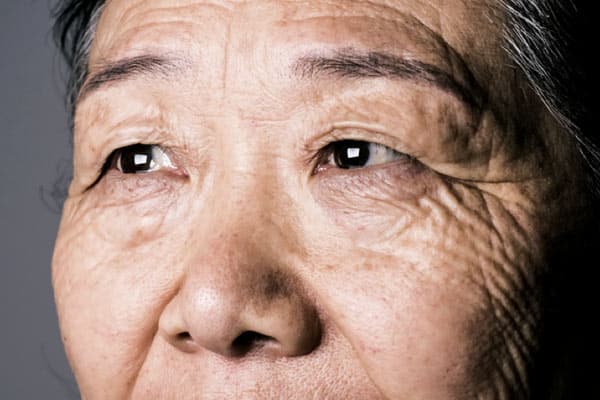Consider the many complex tasks the brain accomplishes to help you see and comprehend what you’re seeing. The eyes transmit data that must to be intricately combined with memories, input from other senses, and details on the environment around you.
In an instant, you know there’s an orange tabby cat that looks just like the one you had as a child resting in the shade of a palm tree. And as long as your eyes are open and focused on what’s around you, your brain is continually providing you with the information you need to understand the world you live in.
Now consider how the brain is affected for someone with dementia. It’s easy to see why vision changes and dementia are linked. This is especially true in the areas of:
- Depth perception
- Color and contrast perception
- Peripheral vision
- Motion recognition
Vision changes in a person with dementia may result in the individual reaching for a table that’s all the way across the room, for instance. They may mistake a pattern on the floor for 3D objects and walk more cautiously to avoid tripping. These behaviors may be mistaken for hallucinations or may occur in conjunction with hallucinations. Whatever the cause, visual misperceptions can cause someone with dementia to:
- Think that their reflection in the windows or in a mirror is another person.
- Have trouble determining where the seat of the chair is to safely sit down.
- Experience heightened stress and anxiety as a result of the confusion from an overstimulating environment.
- Struggle to eat or tend to other activities of daily living independently.
- Think that the events taking place on TV are actually happening in the room.
How Can You Help Someone Experiencing Vision Changes and Dementia?
These recommendations can help a person with dementia live more safely and independently in spite of the vision changes they are experiencing.
- Make sure that there is plenty of light in each room of the home.
- If any specific items cause the person to feel especially stressed or confused, remove them if at all possible.
- Keep the curtains drawn at nighttime or whenever the sun is causing a glare to eliminate reflections.
- Use contrasting colors whenever possible. For instance, avoid serving white mashed potatoes on a white plate. Light-colored foods on dark-colored dishes, and vice versa, are much easier to see.
- Explore different adaptive and tech devices to promote independence, such as phones, watches, and remote controls with larger-sized buttons and numbers.
How Can In-Home Care Services Help?
A referred care provider from American, Advocate or Whitsyms In-Home Care can help older adults with a wide variety of challenges, including vision changes and dementia. In-home care allows family members to step away from their care responsibilities with peace of mind in knowing a loved one is receiving professional care from a skilled care provider.
Just a few of the many services offered include:
- Companionship to enhance socialization through engaging conversations, activities, hobbies, exercise, etc.
- Specialized care for someone with Alzheimer’s disease or another form of dementia.
- Assistance and support with personal hygiene needs, such as showers or baths, getting dressed, etc.
- Around-the-clock care and live-in care.
- Transitional care following a surgical procedure or hospitalization.
- Skilled nursing and home health care.
- And more.
Reach out to us to find out more about in-home care for older adults, provided by a skilled and experienced referred care provider, by clicking the link to the location nearest you below:
- American In-Home Care – Serving North, Central, and West Coast of Florida
- Advocate In-Home Care – Serving Southeast and Southwest Florida
- Whitsyms In-Home Care – Serving Southeast and Southwest Florida
State of Florida License and Registration Numbers: 30211518, 30211651, 30211295, 30211390, 30210978, 30211293, 30211382, 30211504, 30211733, 30211535, 30211531, 30211710, 30211709, 30211045, 5661


